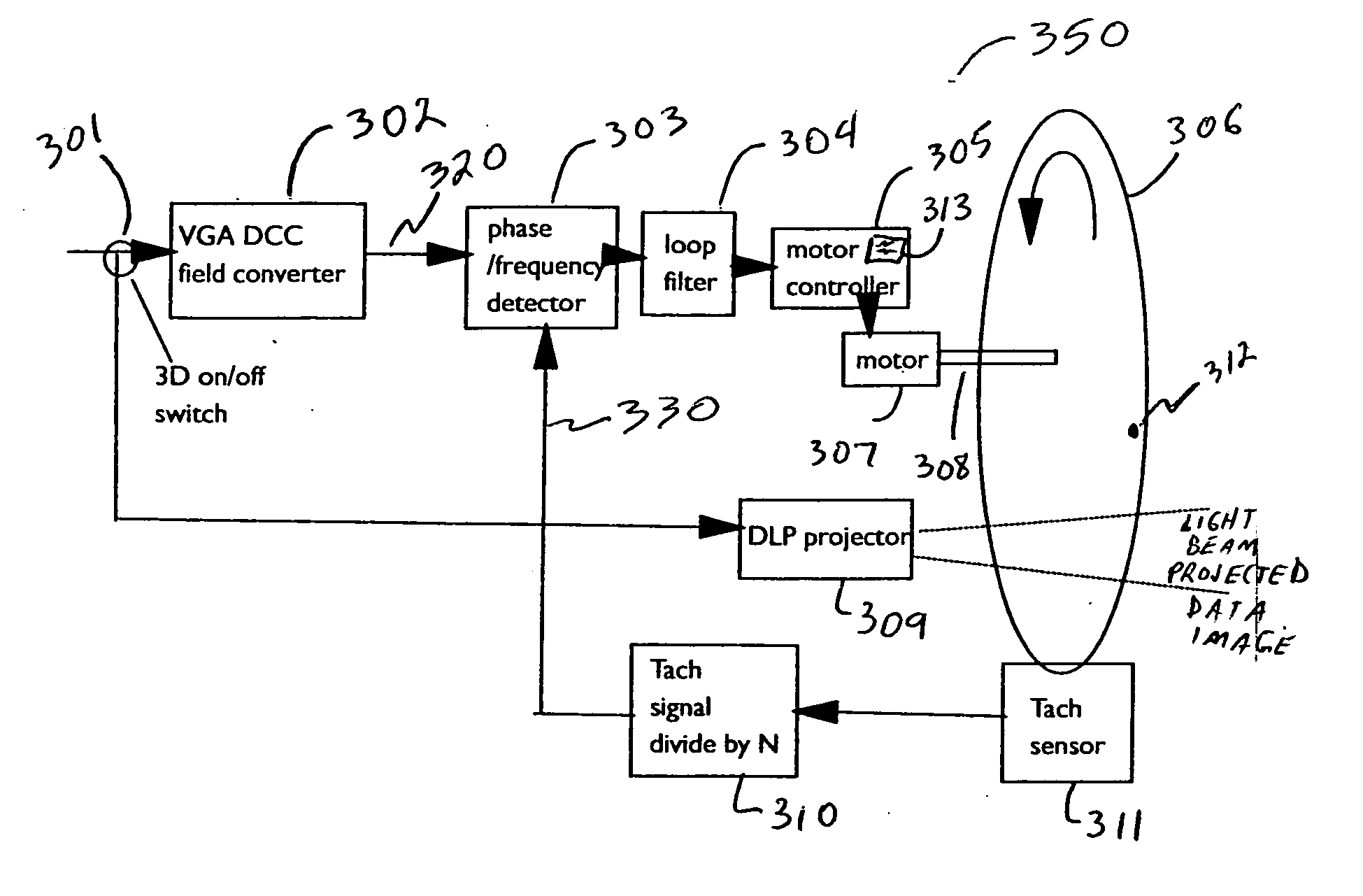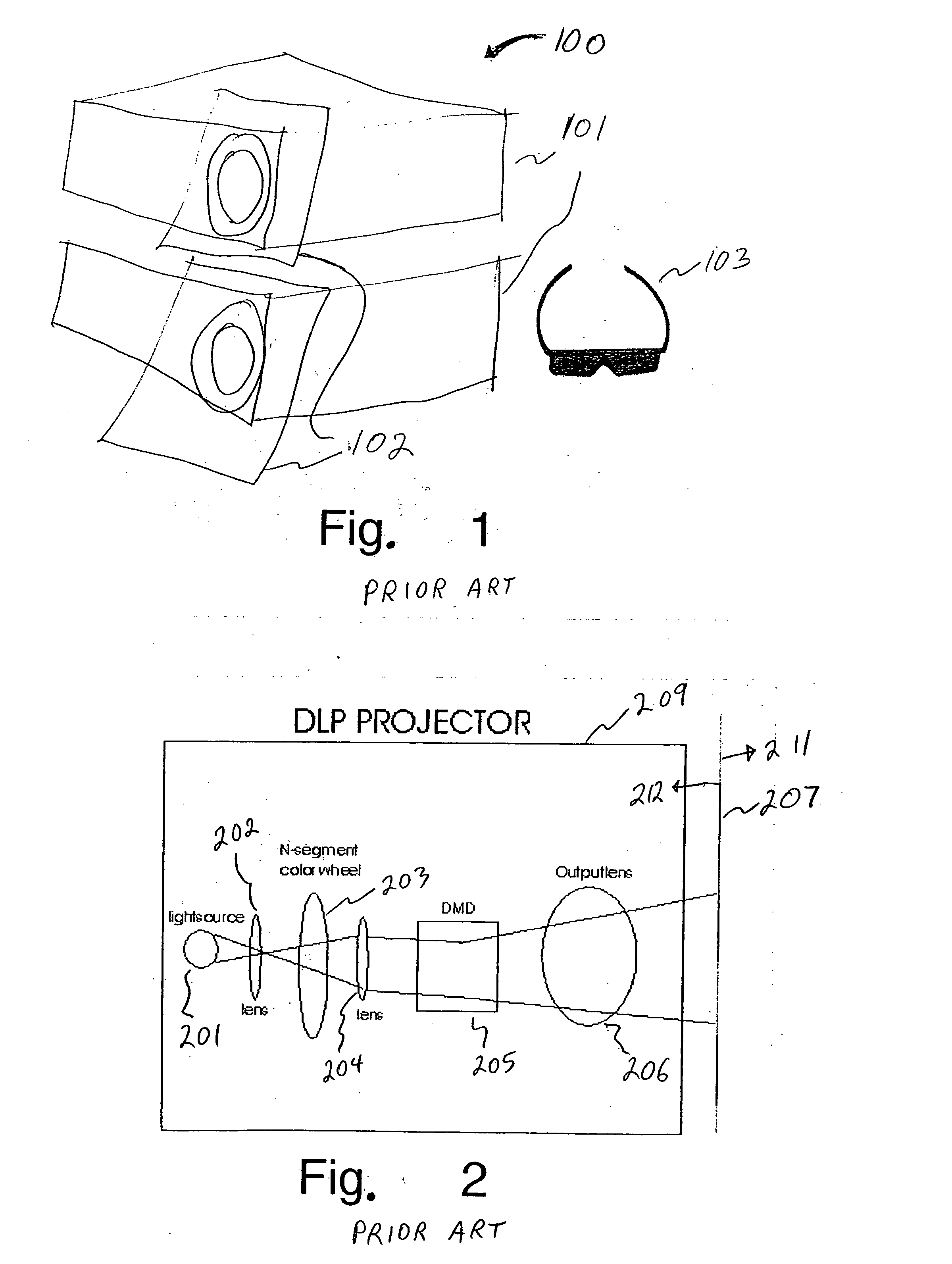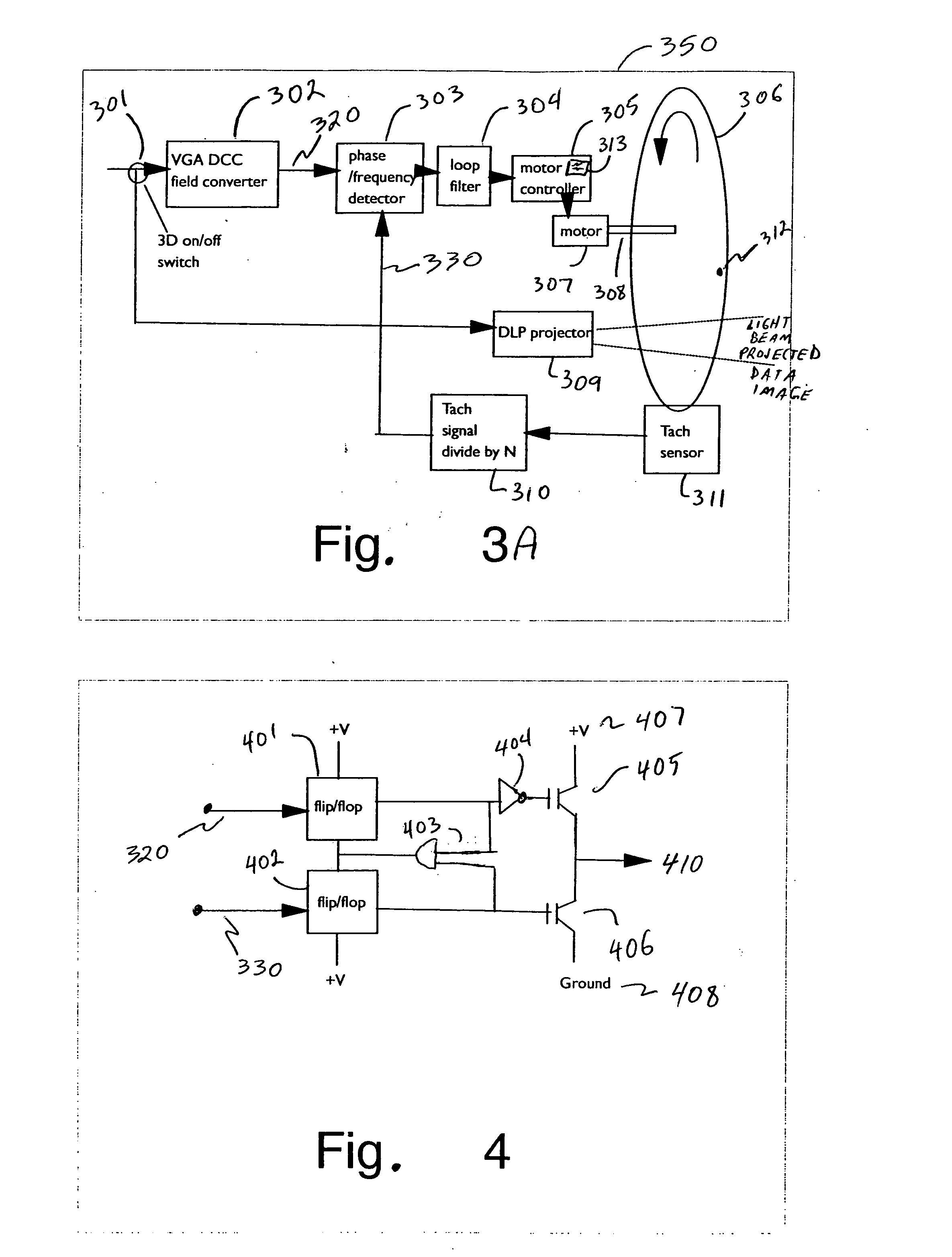Method to synchronize stereographic hardware to sequential color rendering apparatus
a color rendering apparatus and stereographic hardware technology, applied in the field of synchronizing stereographic hardware and sequential color rendering apparatus, can solve the problems of stray light leakage through seams, affecting affecting so as to improve the depth of field, improve the quality of the image, and reduce the effect of flicker
- Summary
- Abstract
- Description
- Claims
- Application Information
AI Technical Summary
Benefits of technology
Problems solved by technology
Method used
Image
Examples
Embodiment Construction
[0055] For generating three dimensional (“3D”) images, two separate two dimensional (“2D”) images representing two lines of sight of a 3D scene are required—one 2D image viewed by each of a person's eyes exclusive to each eye. The apparatus illustrated in FIG. 1 is a traditional 3D projection system that uses a two projection device to simultaneously overlap the images and achieve a stereoscopic display.
[0056] With reference to FIG. 1, there is illustrated a prior art three dimensional projection system 100. This prior art utilizes two separate projectors 101 each projecting an identical scene but each with a slightly different perspective corresponding to the different perspectives between a person's left eye and right eye lines of sight. Polarized glass (or other material) filters 102 are placed in the paths of the projected light beams from each of the two projectors. The polarization angles of these filters are offset 90° from each other. In order for a viewer to perceive a thr...
PUM
 Login to View More
Login to View More Abstract
Description
Claims
Application Information
 Login to View More
Login to View More - R&D
- Intellectual Property
- Life Sciences
- Materials
- Tech Scout
- Unparalleled Data Quality
- Higher Quality Content
- 60% Fewer Hallucinations
Browse by: Latest US Patents, China's latest patents, Technical Efficacy Thesaurus, Application Domain, Technology Topic, Popular Technical Reports.
© 2025 PatSnap. All rights reserved.Legal|Privacy policy|Modern Slavery Act Transparency Statement|Sitemap|About US| Contact US: help@patsnap.com



